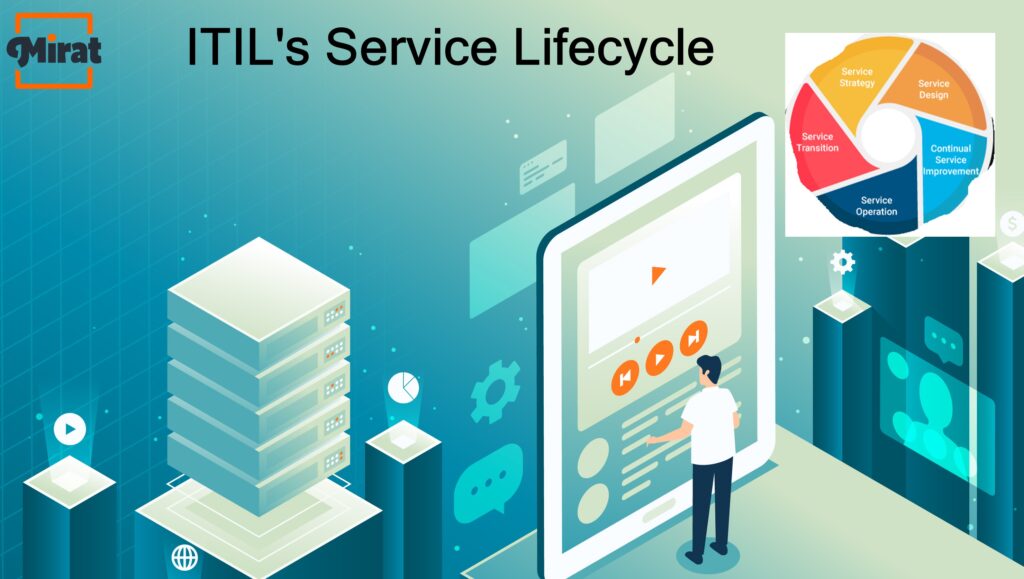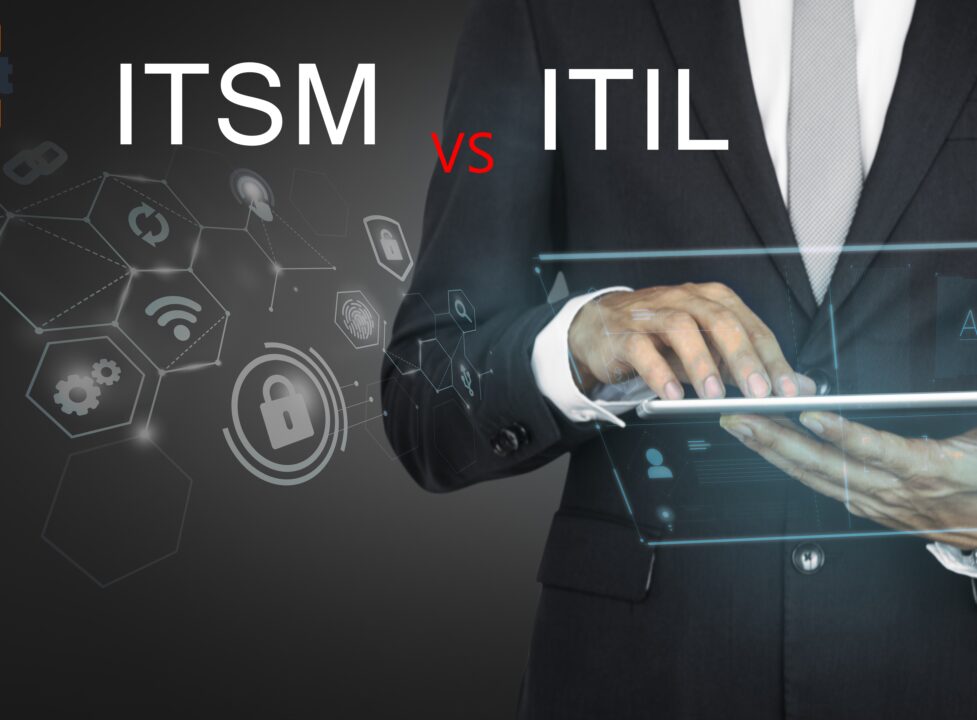How to best define ITSM vs ITIL? Increasingly, businesses are relying on technology to support their fundamental activities, and the ITIL service management framework helps guide the IT organization in providing ITIL service management services that are aligned to their strategic goals. Its primary goal is to ensure that the IT organization’s activities and service offerings are in sync with the organization’s IT demands.
ITIL Provides A Framework For Figuring Out A Company’s IT Role.
Information technology might be viewed as a hindrance rather than an enabler by companies in conventional sectors when it comes to their operations. An important part of the IT Infrastructure Library’s role in shifting the paradigm was emphasizing IT’s role in helping organizations achieve their business goals. An important aspect of the ITIL process framework is that it understands the need of delivering value to consumers through service delivery.
Step-by-Step ITIL Process Implementation
ITIL consists of 26 core procedures that operate together to build an overarching framework for managing IT services in your company; however, nearly no company today would attempt to implement all 26 procedures at the same time. With only 8-10 information technology infrastructure library processes being implemented at a time, even very large enterprises can find it difficult to stay on top of everything. Processes may be implemented in stages, with some businesses starting with fewer and fine-tuning them over time. It is common for companies to begin with the most fundamental aspects of a ITSM service desk, such as incidents and requests, before moving on to more complex ITIL infrastructure processes.
ITIL’s Service Lifecycle: What’s It All About?
There are five main stages in ITIL’s current definition of best practices for ITSM, each of which corresponds to a specific process, policy, or role that supports the overall objectives of ITSM. Each of the five phases of ITIL’s IT service lifecycle is described here.
Service Strategy for ITIL

The initial phase in the lifecycle of any IT service is the development of a service plan. As a first step, the IT department tries to better understand the strategic goals and IT requirements of the business to which it belongs, as well as the demands of the consumers. This alignment of organizational and customer needs with IT activities makes it easier for IT to function as an enabling force within the business and demonstrate its worth.
A service strategy is a four-step procedure in the ITSM lifecycle.
-
Management of Strategic Initiatives
-
Services for the Management of Financial Resources Management of demand for a portfolio
It is possible to achieve the most cost-effective IT services by utilizing the financial management procedure. However, this does not always imply the lowest price since the organization must choose the best-fit solutions that match quality and demand needs regardless of cost while still showing a significant ROI for the organization.
Management of the service portfolio involves defining the service offerings and ensuring that they match the needs of the customers. There are services that are yet to be supplied, those that are presently being provided by the IT organization, and those that are no longer being provided by the IT organization in a working service portfolio.
Designing IT services using the ITIL framework
When it comes to IT service design, ITIL service management emphasizes that it’s not just about the IT service itself but also about all of the technological and other aspects of the service’s implementation. As part of the process of designing a service, service designers take into account the wider technological, business, and organizational contexts.
Service design processes include the following:
- Coordination in the design process
- Catalogue management for service offerings
- Management of the degree of service
- Management of security
- Management of suppliers
- Management of a company’s accessibility
- Controlling resource availability
- Ensuring the continuity of IT services
The service design team’s primary responsibility is the management of the service catalogue. Typically, clients will be presented with a service catalogue as an online portal through which they can access information about available services and submit service requests to the IT department and other service providers. In the service catalogue, you’ll find details on all of the services offered, how to get them, who to contact to get them, where to go for self-service, and what they cost and what they deliver.
Changing to an ITIL-based service model
We must efficiently bridge the gap between service design and service execution by employing transitional methods. New service offerings are now in the implementation stage, moving from the conceptualization stage to the actual execution stage. When you follow the seven steps of Service Transition, new IT services are guaranteed to satisfy their strategic goals and to be maintained and operated cost-effectively.
In the ITSM service transition stage, there are seven processes:
- Transition support and planning
- ITIL change management
- Keeping track of service assets and configuration management
- service management software release and deployment administration.
- Services are tested and validated.
- Analyzes of alterations
- Knowledge Management
We can see the Deming cycle (Plan-Do-Check-Act) represented in the ITIL project management processes, particularly in the transition of services. Testing procedures, such as service validation and testing, and change evaluation, are used to ensure that service offerings function properly. The Knowledge Management process plays a role in helping the IT organization minimize redundancy in knowledge acquisition and collect data and insights that can be used to make managerial choices.
ITIL Service Management
The IT company may provide agreed-upon levels of service to end-users and customers by using ITIL process framework and best practices. IT service management’s the most important step in the delivery of value to customers; without this, the other phases lose their significance. The activities that make up a service operation are only one part of what makes it a service operation; there are many other components that contribute to delivering value to the customer.
IT service management consists of the following steps:
- Management of access rights
- Management of an event
- the satisfaction of an inquiry
- Management of Problems and Incidents
IT Service Operations consists of four functions:
- Desk of customer service
- Management in the field of technology
- Keeping track of the ITSM software, you’re using
- Operations management in the information technology field
With the service desk, ITIL provides end-users and customers with a single point of contact for any problems connected to ITSM procedures and an efficient means of communicating with IT professionals. Incident management ITIL, communication management, request fulfillment, and other operations may all be handled by a service desk in addition to the more traditional functions of a call center or a help desk.
Software developers like MIRAT support ITIL.
ITIL is not a tool in and of itself but rather a set of best practices and process advice. Although ITIL has influenced the development of many of the most commonly used IT products today, it has not been forgotten. Mirat.ai’s ITSM software has been trusted throughout the world, increasing its operational efficiency and saving them millions of dollars in the process.
Find out more about Mirat.ai Service Management, a powerful and adaptable tool that can transform your service desk.
FAQS
What is ITSM?
Everything that goes into designing, creating, delivering, supporting, and managing IT services is covered under ITSM (or IT Service Management).To know more read this article- What is ITSM.
What is ITIL?
Best practices for IT service delivery are laid out in the ITIL framework. ITIL’s methodical approach to IT service management benefits risk management, client interactions, cost efficiency, and a stable IT environment.
Which is better, ITIL vs ITSM?
ITSM infrastructure management allows you to manage services and respond to client demands, whereas ITIL (Information Technology Infrastructure Library) is more of an overarching ITSM framework that allows you to improve your workflow.
Mirat.ai’s IT Infrastructure Management is Affordable & Easy to use! Get your Dashboard ready in only 5 Minutes. Request for Trial/Demo now (or) Contact our Team Now .
Contact Information:
Hema
Sales Executive
Phone: +1-315-636-4213
Email: sales@mirat.ai
Website: https://www.mirat.ai/


